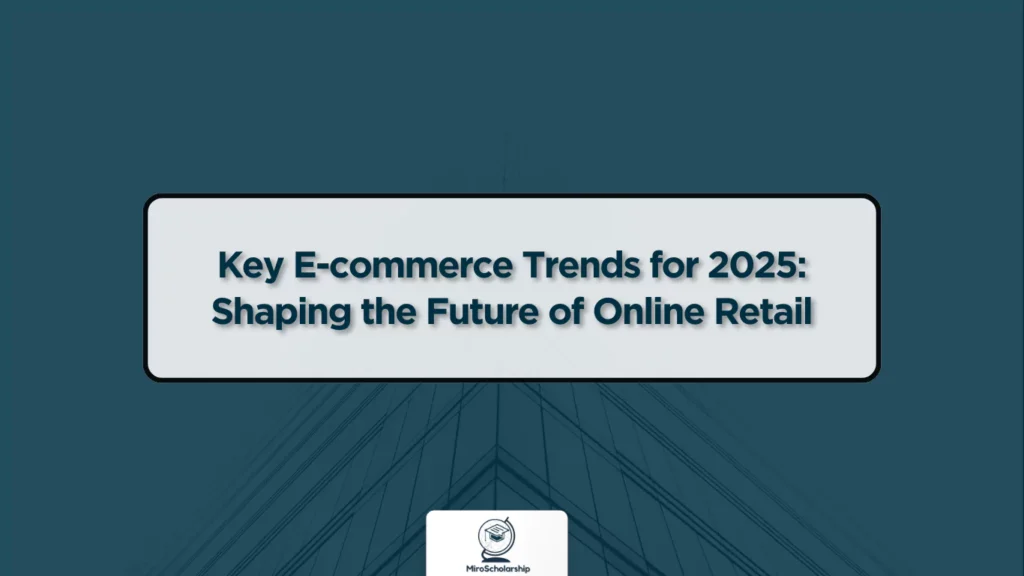Introduction
The e-commerce landscape is evolving rapidly, driven by technological advancements, changing consumer behaviors, and global economic shifts. As we move towards 2025, several e-commerce trends for 2025 are set to reshape the industry, from AI-driven customer experiences to sustainable practices. Understanding these trends will help businesses and professionals stay ahead of the curve.
Key Trends in E-commerce
AI and Personalization
Artificial Intelligence is not just a buzzword; it’s becoming the backbone of modern e-commerce. AI helps in personalizing the shopping experience through:
- Product Recommendations: Platforms like Amazon and Netflix have mastered the art of recommendation algorithms. AI analyzes browsing history, previous purchases, and customer preferences to suggest tailored products.
- Chatbots and Virtual Assistants: Businesses are increasingly using AI-driven chatbots for 24/7 customer support, helping to address inquiries in real-time and improve engagement. For example, companies like Sephora use chatbots for personalized beauty recommendations.
- Dynamic Pricing: AI adjusts prices based on demand, competition, and consumer behavior. This technique is prevalent in travel websites like Expedia and Booking.com, where prices fluctuate dynamically.
Augmented Reality (AR) in Shopping
AR is revolutionizing the way customers interact with products online. Virtual try-ons and 3D previews reduce uncertainty, leading to fewer returns and higher customer satisfaction. Fashion brands like Gucci and Zara use AR to allow customers to visualize clothing or accessories virtually before buying. AR is expanding beyond fashion into home decor, where customers can place virtual furniture in their living spaces.
Sustainability and Ethical Shopping
Consumers are becoming more environmentally conscious, demanding sustainable practices from e-commerce brands. Companies are responding by:
- Eco-friendly Packaging: Reducing plastic use and opting for biodegradable materials.
- Ethical Sourcing: Ensuring products are sourced responsibly, with an emphasis on fair trade and labor rights.
- Carbon-Neutral Shipping: Brands like Shopify are setting a trend by introducing carbon-neutral shipping options, reflecting a commitment to sustainability.
Voice Commerce
The rise of voice-activated devices like Amazon Echo and Google Home has introduced a new shopping medium. Voice search is expected to dominate online queries, making it essential for businesses to optimize their SEO for conversational keywords. By 2025, voice commerce could account for a significant portion of e-commerce sales, driven by improvements in natural language processing.
Case Study: The Rise of Direct-to-Consumer (DTC) Brands
Brands like Dollar Shave Club and Warby Parker have bypassed traditional retail channels, opting for a direct-to-consumer (DTC) model. This strategy allows them to control the customer experience, gather data, and reduce costs. With platforms like Shopify, it’s easier than ever for new brands to establish a DTC presence, offering personalized products without a middleman. This trend will continue to grow, with established brands also launching DTC lines to stay competitive.
Key Takeaways from the DTC Approach:
- Customer Experience Control: Direct interaction with consumers allows for better control and personalization.
- Data-Driven Decisions: Gathering first-hand data to make informed business decisions.
- Cost Reduction: Eliminating middlemen reduces costs and increases profit margins.
Conclusion
Staying ahead in the e-commerce sector requires adapting to trends like AI personalization, AR, and sustainable practices. Businesses that embrace these e-commerce trends for 2025 can not only survive but thrive in a competitive marketplace. By leveraging these trends, companies can enhance customer experiences, drive growth, and secure a strong position in the evolving digital landscape.
Read More : Top Digital Marketing Strategies for Small Businesses in 2025

